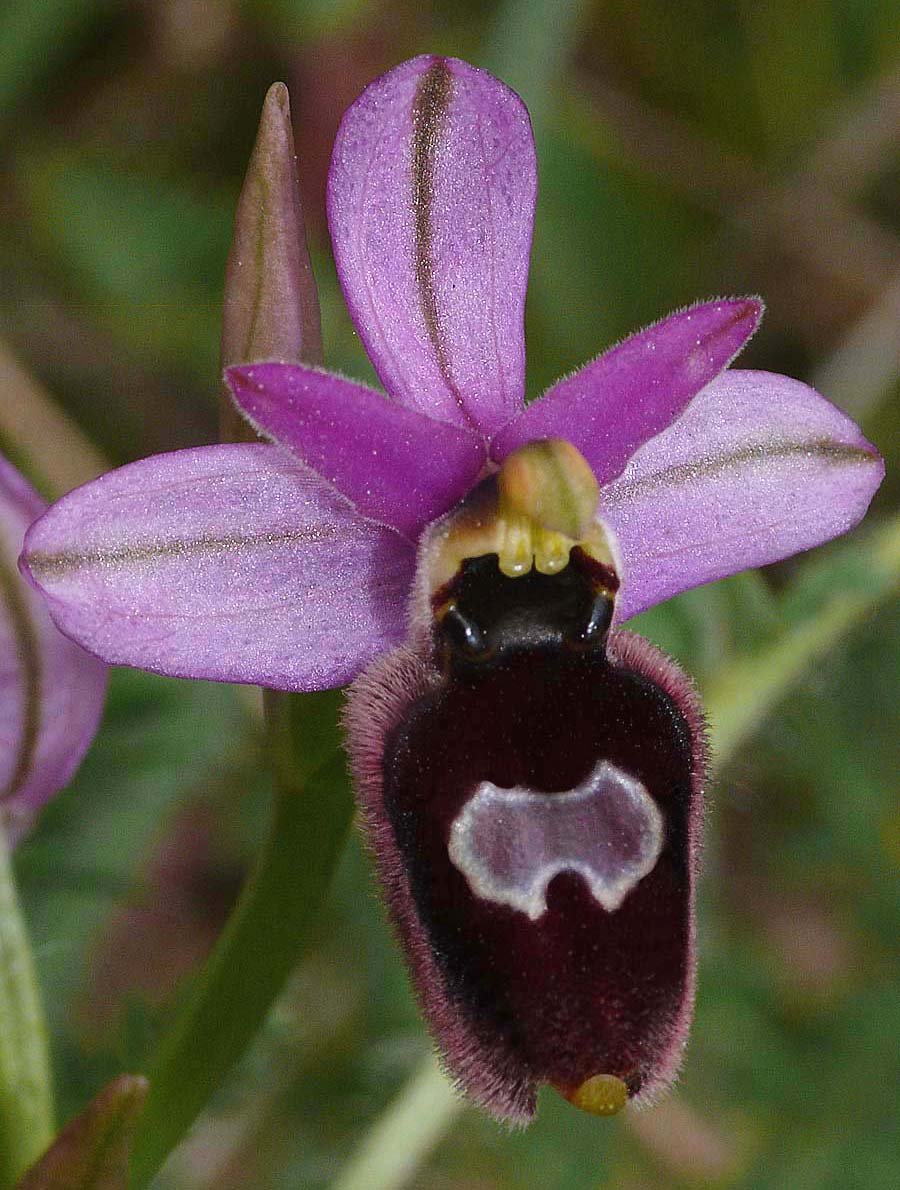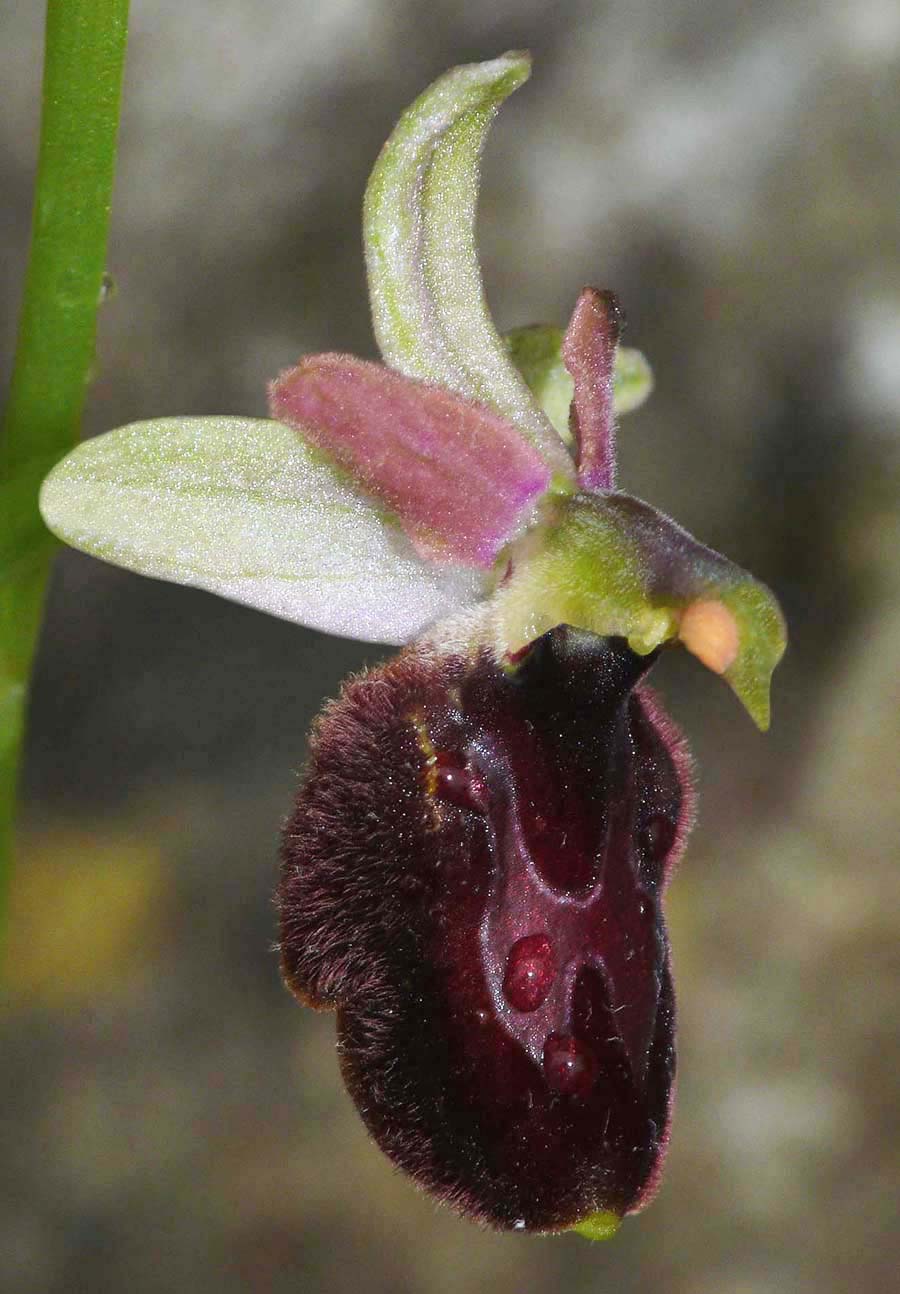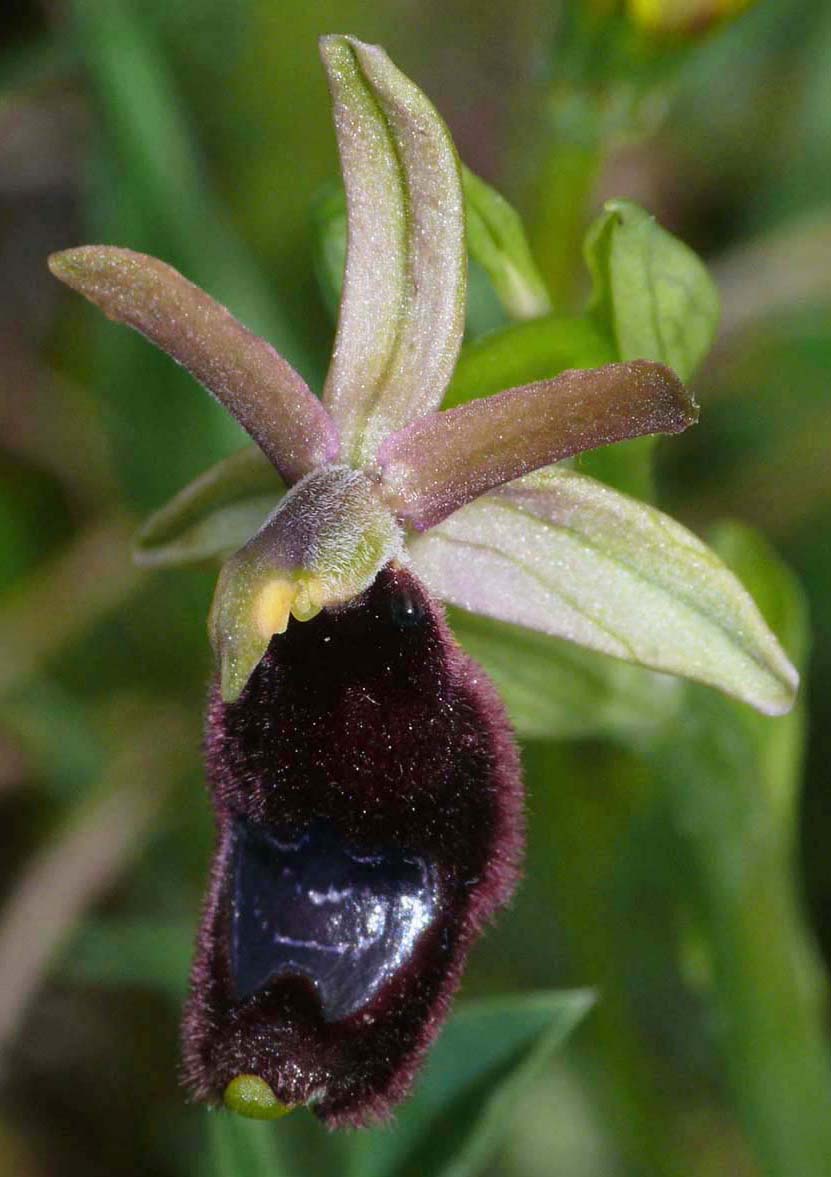This often abundant Ophrys was
first described from Genoa (Italy) in
1823
by the eminent 19th century Italian botanist Signor Antonio Bertoloni.
In 2001 however, Messrs Romolini and Soca authored a paper in which
they asserted that the name O. bertolonii
applied only to plants from central and southern Italy, Sicily and
southern Croatia. It remains to be seen whether or not this view is
widely accepted but if so, the plants depicted here are all from that
described range and therefore more correctly titled O. romolini.
It is unclear where the precise distribution lines are drawn and so plants from (for example) Tuscany are of unknown nomenclature. One of the key distinguishing features is the longitudinal curve of the lip, which is most apparent in O. romolini and flatter in O. bertolonii. For the purposes of this text we will continue to refer to them all as O. bertolonii but the current situation is really quite unsatisfactory.
The O. bertolonii group is distinctive and readily identifiable, though distinguishing the individual species that comprise the group is less straightforward, particularly as in many cases there are considerable overlaps of range. In southern France O. bertolonii overlaps with both O. saratoi and O. aurelia, in northern Italy with O. benacensis, in the Gargano region it often grows side by side with O. bertoloniformis and in Sicily it encounters the very rare but very similar O. explanata .
The pictures are from southern Tuscany, Gargano and Sicily, dating from the middle weeks of April. It is however quite possible to find O. bertolonii in flower at any time between March and June as it enjoys a very long flowering period that is closely associated with the variably timed emergence of its two pollinating bee species.
It is unclear where the precise distribution lines are drawn and so plants from (for example) Tuscany are of unknown nomenclature. One of the key distinguishing features is the longitudinal curve of the lip, which is most apparent in O. romolini and flatter in O. bertolonii. For the purposes of this text we will continue to refer to them all as O. bertolonii but the current situation is really quite unsatisfactory.
The O. bertolonii group is distinctive and readily identifiable, though distinguishing the individual species that comprise the group is less straightforward, particularly as in many cases there are considerable overlaps of range. In southern France O. bertolonii overlaps with both O. saratoi and O. aurelia, in northern Italy with O. benacensis, in the Gargano region it often grows side by side with O. bertoloniformis and in Sicily it encounters the very rare but very similar O. explanata .
The pictures are from southern Tuscany, Gargano and Sicily, dating from the middle weeks of April. It is however quite possible to find O. bertolonii in flower at any time between March and June as it enjoys a very long flowering period that is closely associated with the variably timed emergence of its two pollinating bee species.
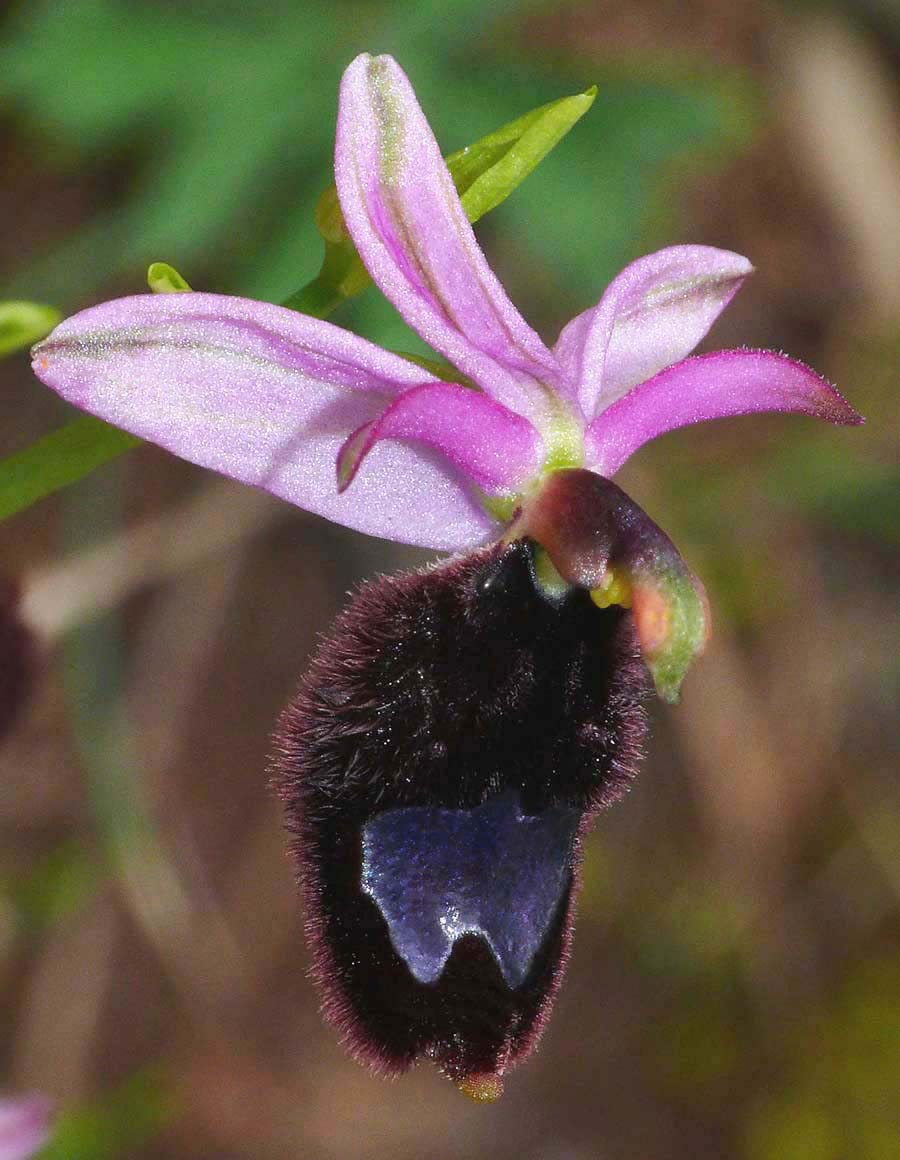
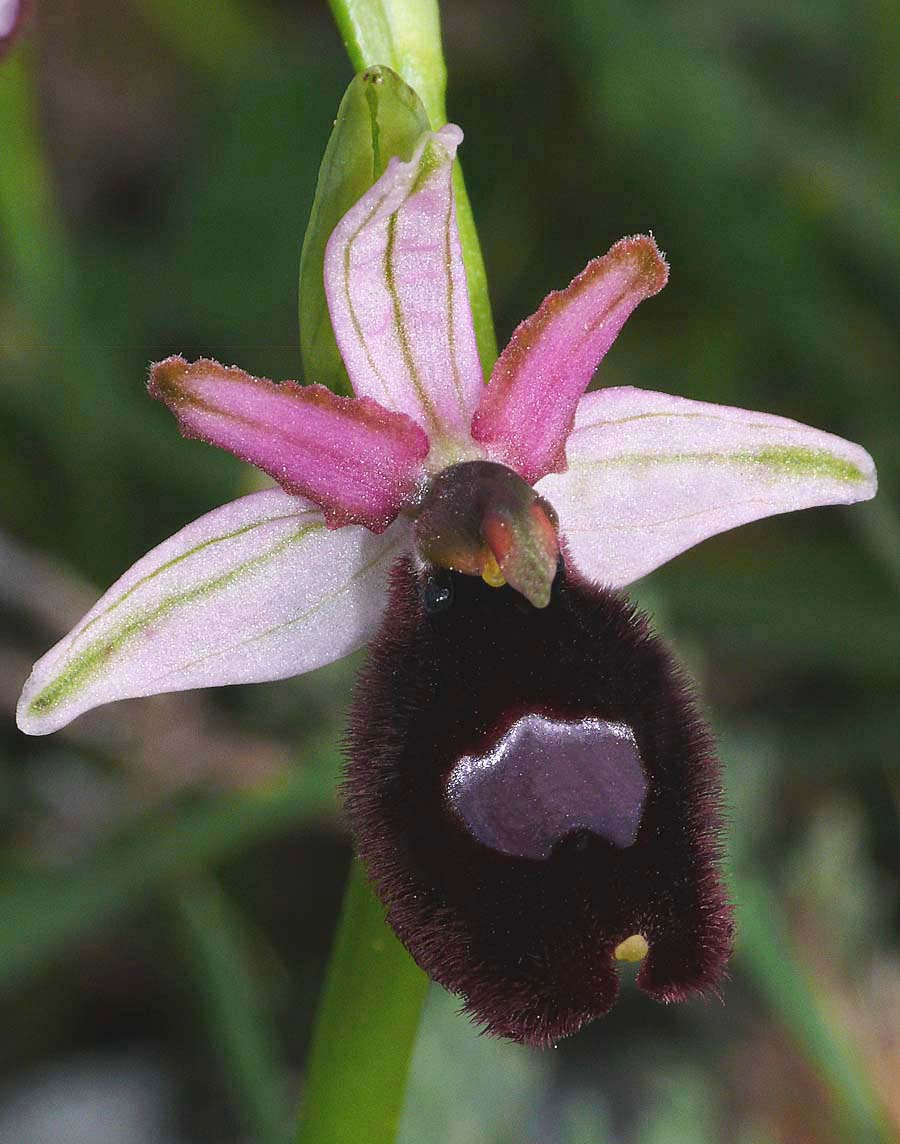
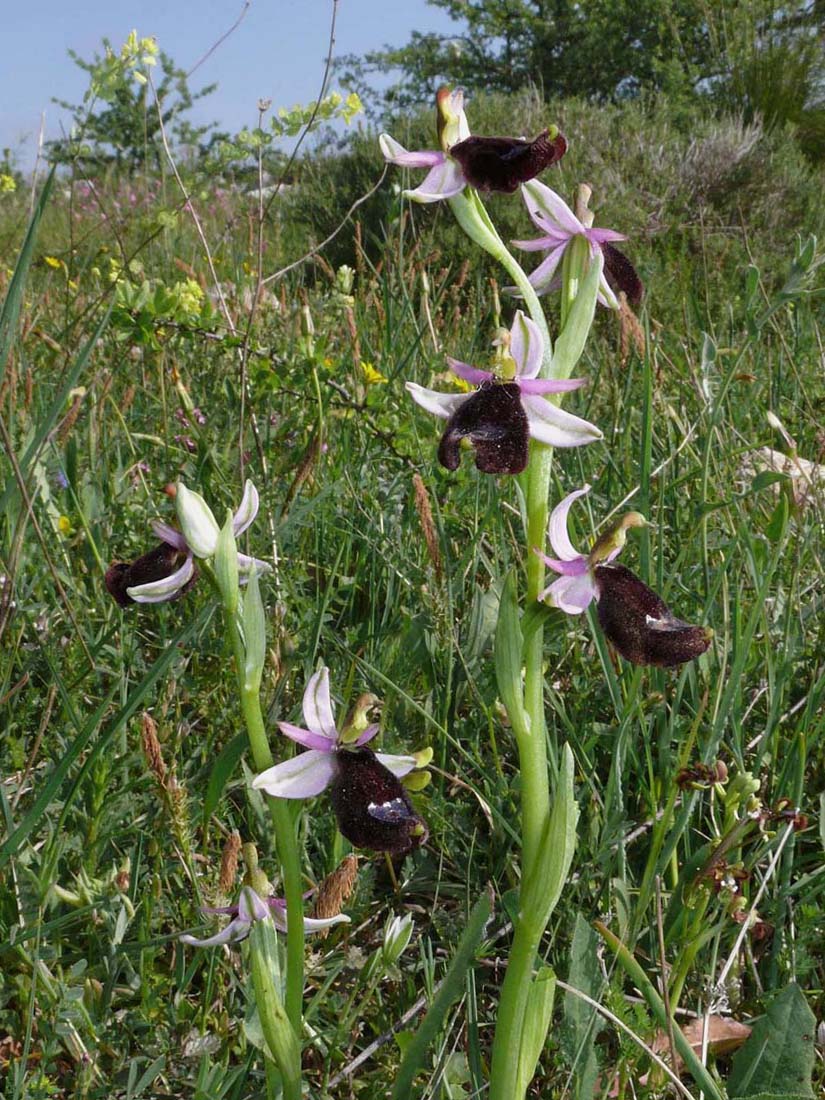
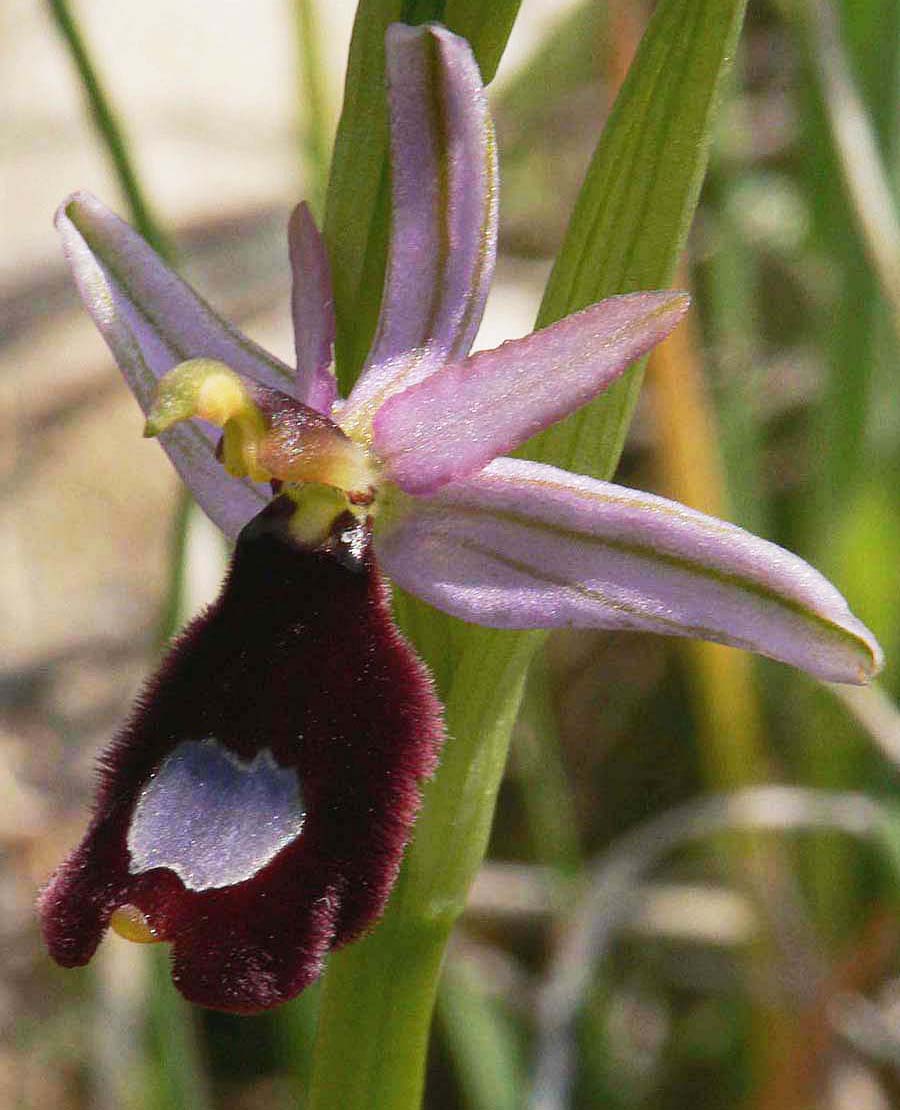
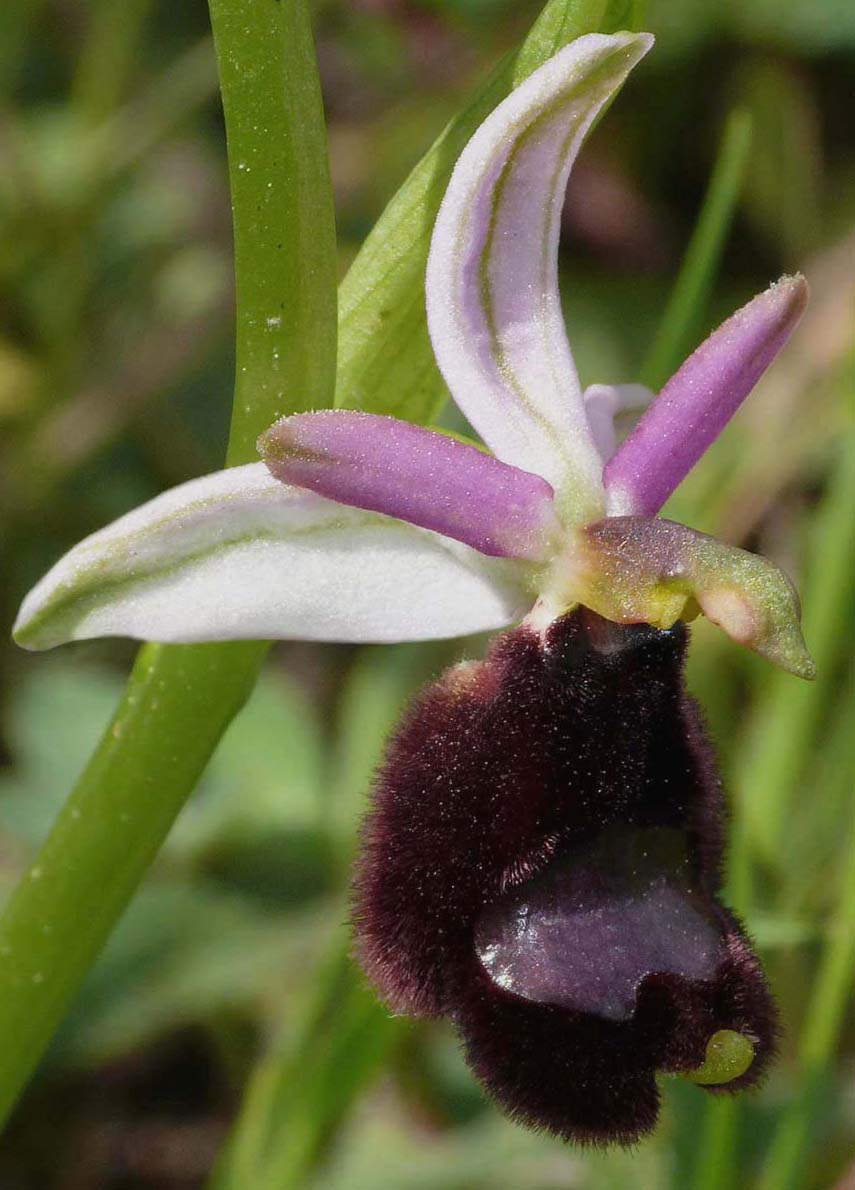
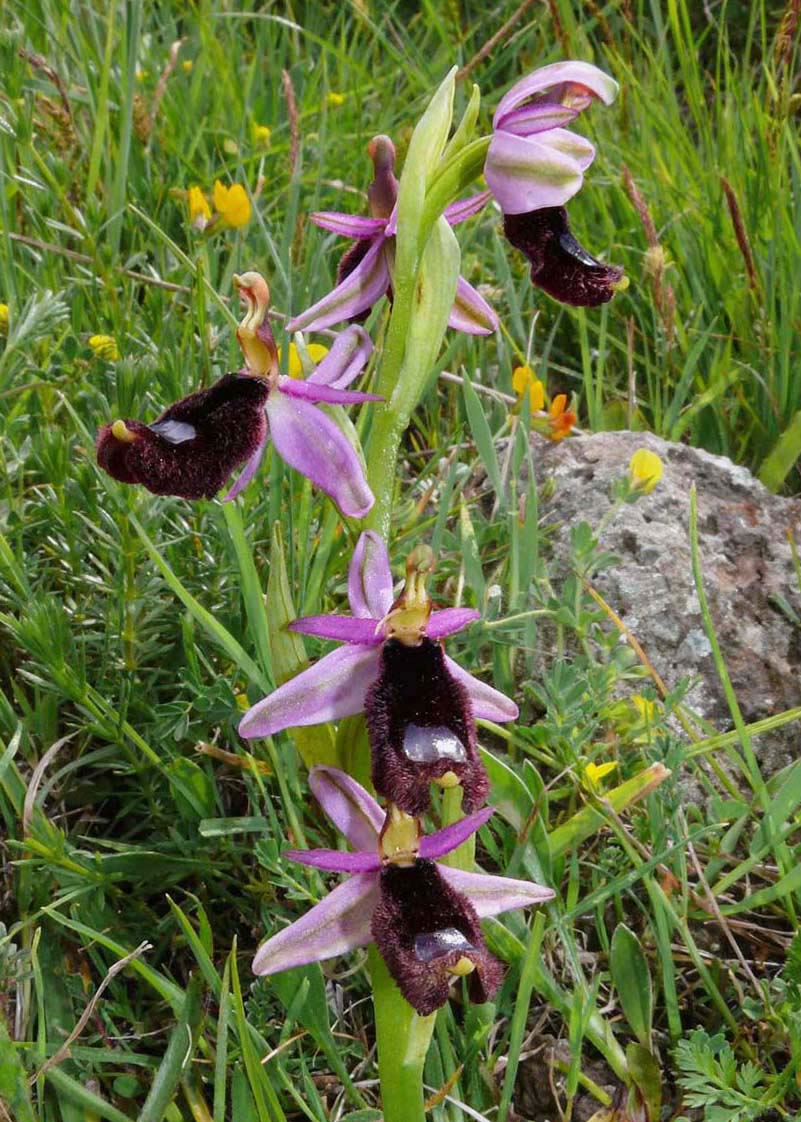
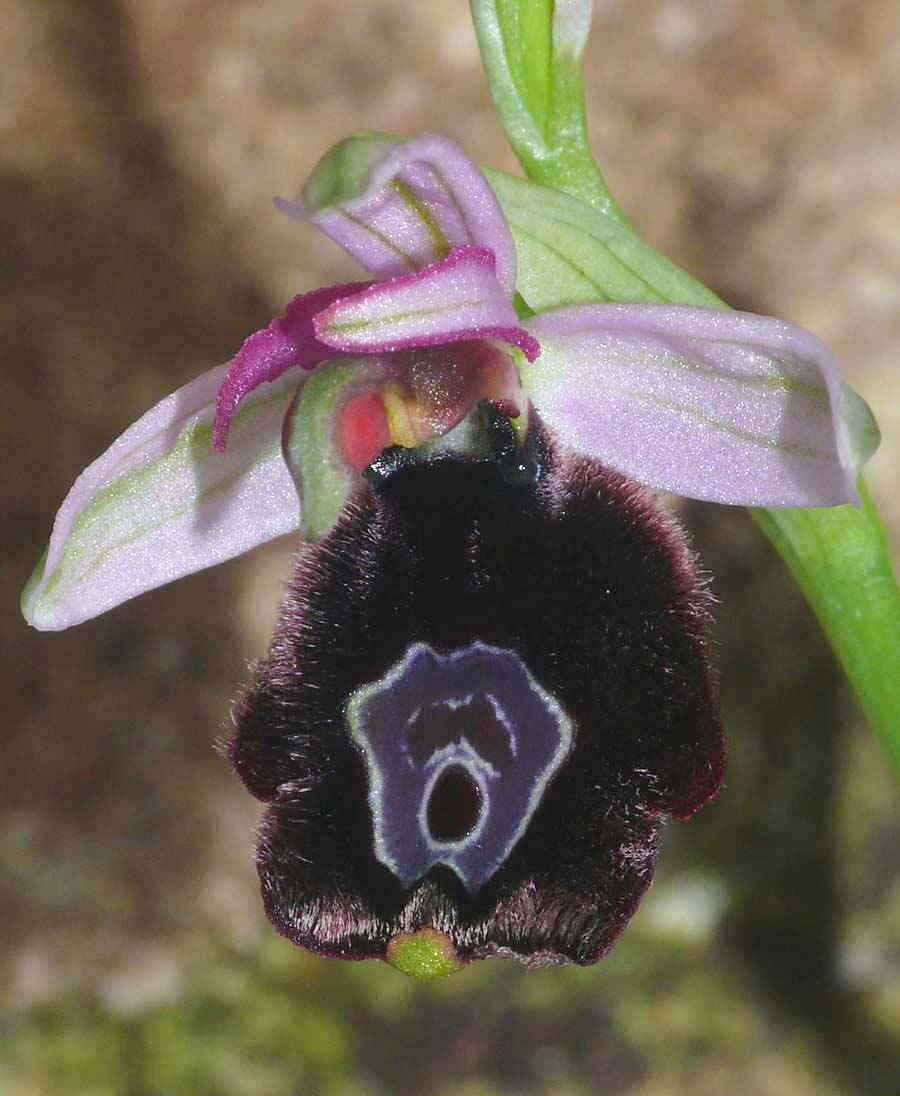
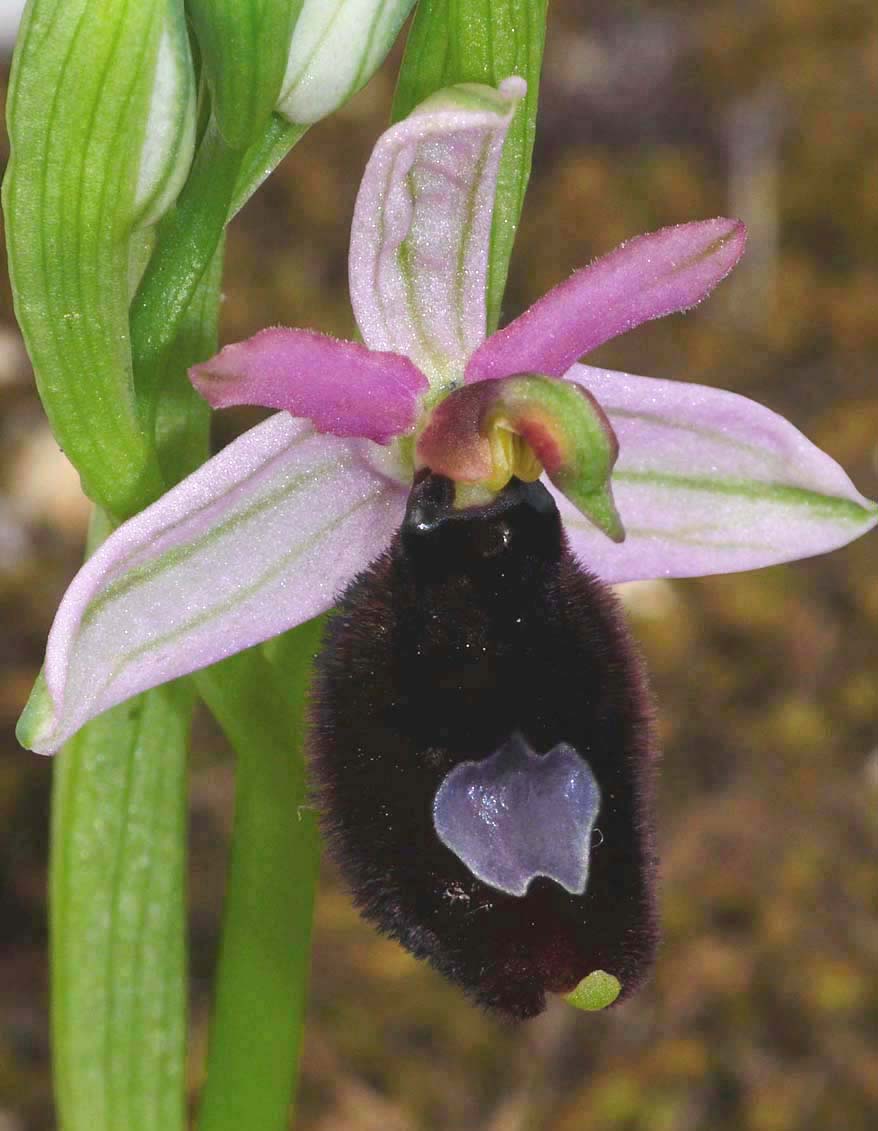
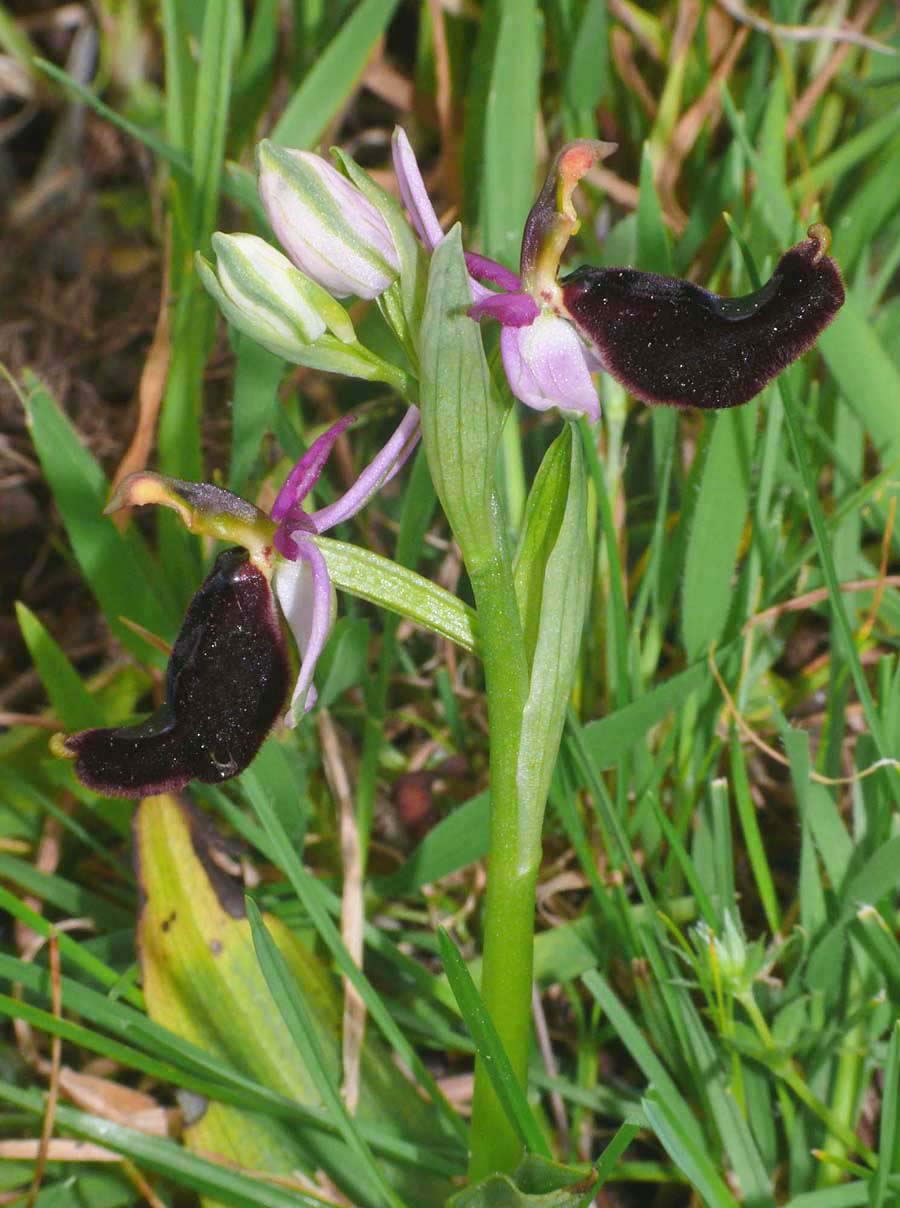
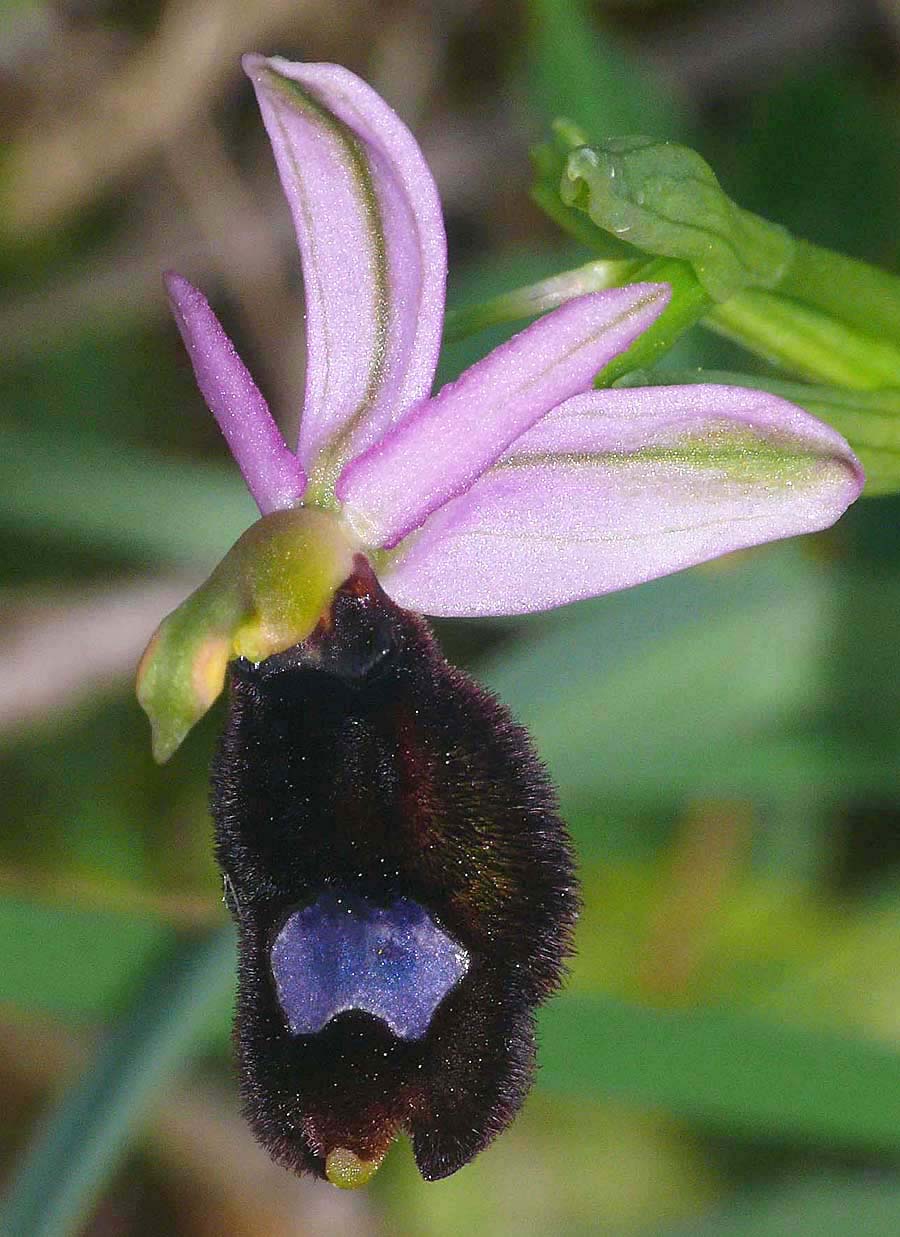
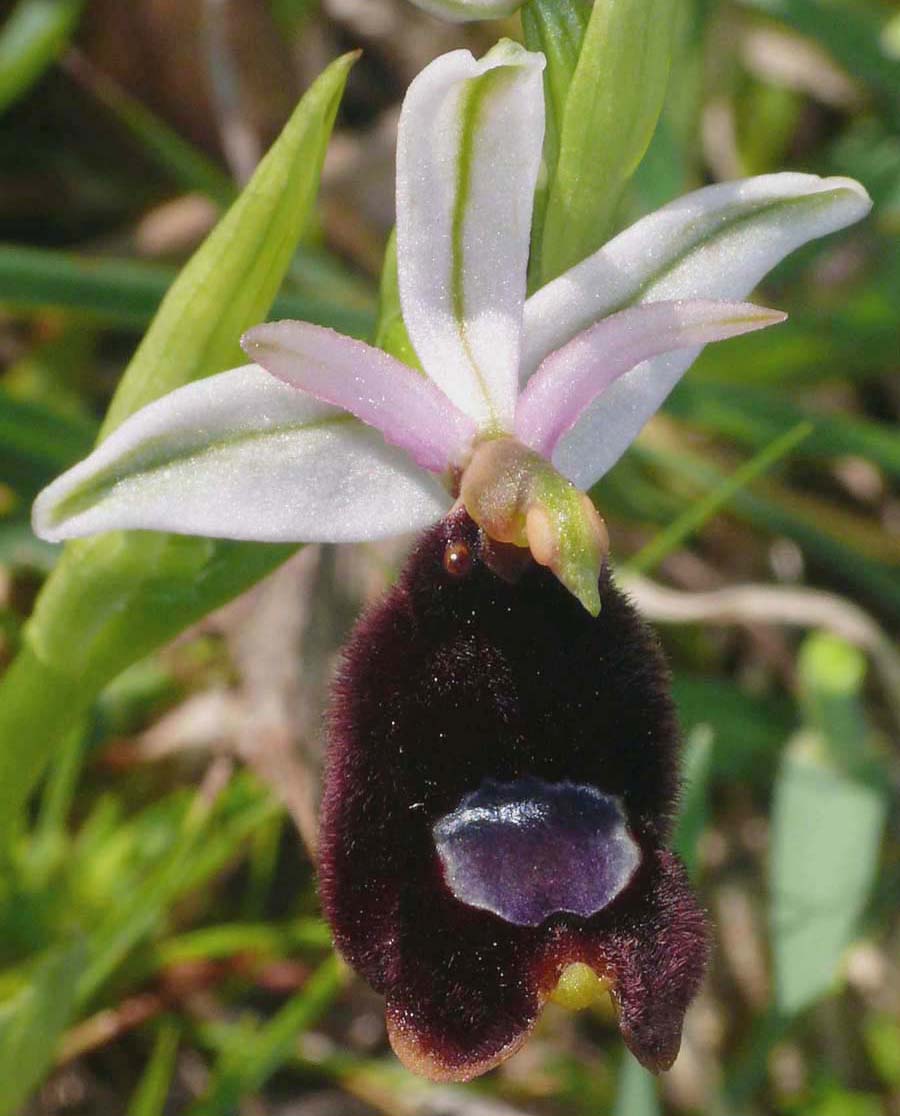
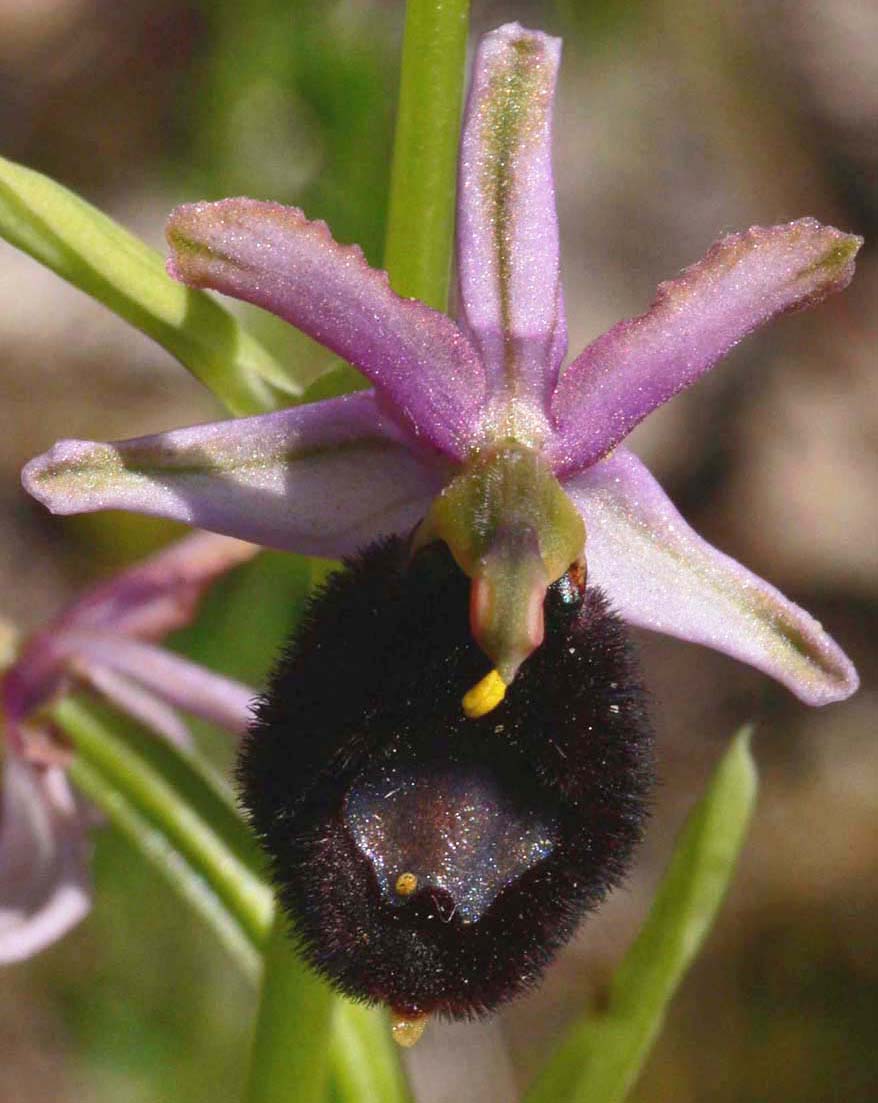
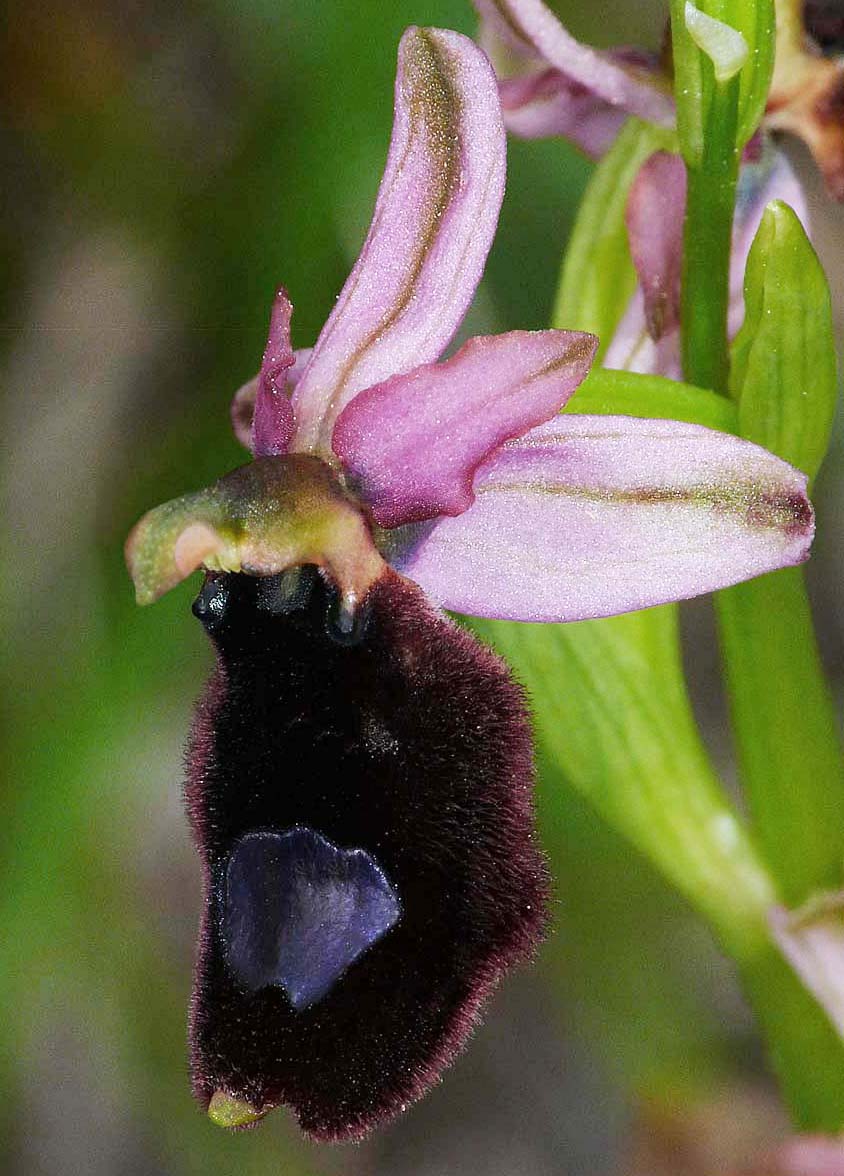
The following three pictures come from Sicily and are presumably hybrids although the precise genetic contributors are unknown. The final picture is particularly interesting as it depicts a plant that has a striking resemblance to O. bertiloniformis, an orchid only found in the Gargano region.
